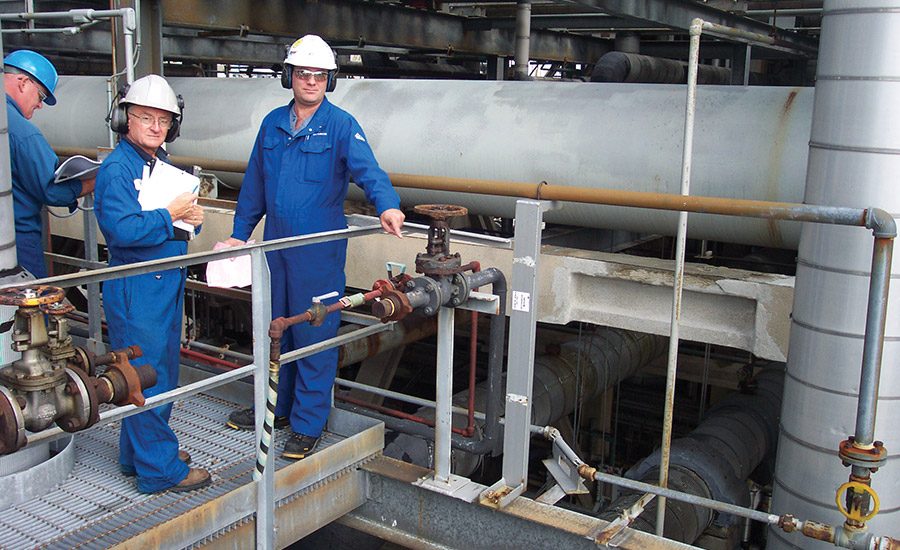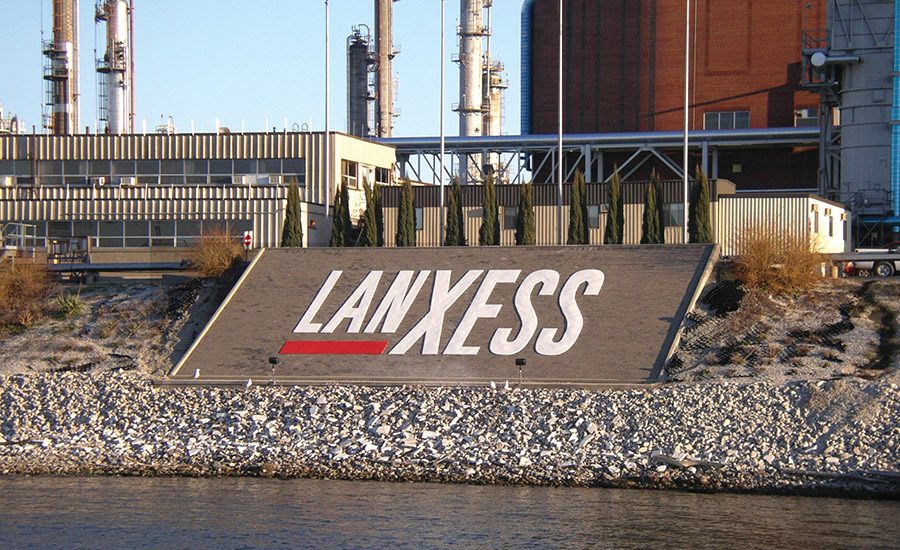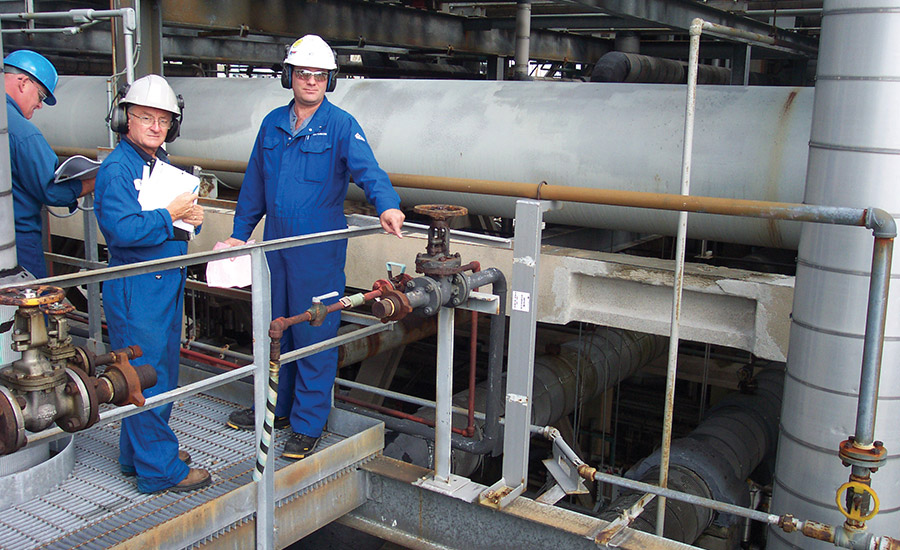Product Profile
Butyl Rubber: A Primer
What is butyl rubber and how is it used?




Butyl rubber is a copolymer of isobutylene and isoprene. Simple copolymers are known as “regular” or “clear” butyl rubber, or simply “butyl.” When butyl rubbers are modified after polymerization with the halogens bromine or chlorine, a second family, known as halobutyl rubber (or halobutyls), results.
The principal characteristic common to both butyl and halobutyls is low permeability to gases and moisture. Butyl rubbers are, thus, used primarily in applications where retention of gases or moisture is important. Approximately 86% of the worldwide usage of butyl rubbers is in tires or inner tubes. Other applications in which the barrier characteristics of butyl rubbers find use include membranes for lining tanks and reservoirs, pharmaceutical closures, sealants, and electronic components encapsulation.
The secondary characteristic of high energy absorption properties leads to use in automotive engine and body mounts and other vibration-damping applications, as well as in chewing gum.
As is the case with most synthetic rubbers, butyl rubbers are mixed with other ingredients by the rubber processor (e.g., tire company) to produce compounds having good physical strength and resistance to atmospheric degradation. Vulcanization is accomplished in the normal manner using sulphur and accelerators. Due to the low unsaturation of the butyl polymer chain, the number of sites where crosslinks can be formed is limited. Butyl rubbers, therefore, vulcanize much more slowly than most synthetic rubbers and do not blend with, or stick to, other rubbers, as these preferentially absorb the curatives.
This is not a disadvantage in components made entirely out of butyl rubber, such as inner tubes. However, in a tubeless tire (as used on the majority of passenger cars), and on many trucks and buses in industrialized countries, it is necessary to stick an impermeable layer of rubber, or “liner,” to the inside of the tire in order to retain air.
By reacting butyl rubber with chlorine or bromine, chlorobutyl or bromobutyl rubbers, collectively known as “halobutyls,” are obtained.
The process involves dissolving butyl rubber in a solvent and adding elemental bromine or chlorine to the cement thus formed. The resulting rubber is highly reactive, and special precautions must be taken to ensure its stability in the finishing processes. The enhanced reactivity permits a vulcanization rate equivalent to that of other synthetic rubbers. Blends with other polymers (e.g., natural rubber) become possible, and compounds based on halobutyl polymers adhere fully to other rubbers in such applications as the tire inner liner.
Though bromobutyl was first produced many years ago, it was only in the early 1970s that the above-mentioned stability problem was overcome and a viable commercial product was introduced. Chlorobutyl is somewhat less reactive than bromobutyl and, unlike bromobutyl, usually needs to be blended with natural rubber (NR) to ensure sufficient adhesion to the tire carcass when used in tire inner liners. In the past, the use of NR reduced compound costs per Kg, but with a significant sacrifice in impermeability. At current prices, it is doubtful if the use of NR can be justified, except where suitable equipment for the processing of 100% bromobutyl compounds is not available. One hundred percent bromobutyl liners can be made thinner for the same impermeability, or show better air retention at the same thickness. For these (and other) reasons, bromobutyl is generally the preferred liner material for high-quality tires.
As halogenation is an additional step requiring further capital-intensive investment, Halobutyls cost more to produce than regular butyl, and sell for higher prices. They are thus not used in inner tubes, except in specialized cases.
LANXESS Butyl Rubber
The major application area for LANXESS butyl rubber is the tire industry, but its remarkable properties make it a key polymer for a variety of technical rubber applications. Butyl vulcanizates offer an attractive range of properties including low permeability, high damping, good reversion and chemical resistance, and excellent mechanical properties.
LANXESS halobutyl rubbers are widely used in pharmaceutical rubber products, such as closures for infusion containers, injection vials, lyophilization, and blood-collection tubes. They are also used as o-rings and gaskets in a variety of aerosol containers and inhalers, and as plungers for applications such as infusion pumps, pre-filled syringes, insulin injectors, and dental anesthetics.
Chewing gum is one of the most interesting applications of the company’s food-grade butyl, which is also manufactured in kosher grades. Due to its direct contact with human saliva, stringent quality-control standards are applied for this grade.
About LANXESS
LANXESS manufactures high-quality products in the areas of chemicals, synthetic rubber and plastics. The company’s portfolio comprises basic and fine chemicals, color pigments, plastics, synthetic rubber and rubber chemicals, leather, material protection products, and water treatment products.
LANXESS Inc., Sarnia site, is the headquarters for LANXESS in Canada, with both a major manufacturing operation and an R&D technology center. Focused on the production of synthetic rubber, this facility is a major supplier to both domestic and international markets, and employs over 770 people.
LANXESS Corp. in the United States was formed when the Bayer Group combined most of its chemical businesses and large segments of its polymer activities. The company began operating as a legal entity in the United States on July 1, 2004. LANXESS Corp. is a member of the German LANXESS-Group that was spun-off from Bayer in January 2005. For more information, visit www.us.lanxess.com.
Sidebar: LANXESS Expands Butyl Rubber Capacity by 40%
Significant milestone in satisfying growing global demand
LANXESS has completed a plant expansion that increases its butyl production by 42%, giving the company a global capacity of 265,000 tonnes per year of butyl and halobutyl rubber, 25% more than before the expansions. The Sarnia, Ontario, Canada, facility expansion follows a 10% increase at the company’s Zwijndrecht site in Belgium (near Antwerp) in 2006. LANXESS, the world’s second-largest butyl supplier, will continue expansion plans to satisfy the ever-increasing global demand for butyl rubber. LANXESS has already begun with preparations for a further expansion, bringing the annual capacity of the Sarnia plant to 150,000 tonnes.
Dr. Axel C. Heitmann, chairman of the Board of Management, LANXESS AG, says, “We see this impressive new facility in Sarnia as vivid proof of our commitment to the future of butyl rubber and its ability to help our world make better, safer, more efficient products.”
Positive Development Driven by Asian Markets
Butyl rubber demand is predicted to continue growing in the coming years. “The Asia-Pacific region is driving this positive development,” said Dr. Ron Commander, head of the Butyl Rubber business unit located in Fribourg, Switzerland. China, in particular, is poised to enjoy above-average growth rates as a major tire producer in the future. “Asia is already our largest sales market, but it will become even more important to us,” Commander said.
Due to considerable demand increases in this region, additional capacities are necessary for manufacturing tires. LANXESS has thus announced plans to build a new butyl rubber facility in Asia.
“We estimate that this will require an investment of approximately 1400 million. This would be the largest investment in the history of our company,” Heitmann said.
Although the current market growth stems mainly from the traditional demand of the tire and pharmaceutical industries, and other niche applications, LANXESS is also conducting research and development in other areas where the outstanding properties of butyl rubber have potentially attractive benefits.
While in Sarnia, Heitmann announced company plans for a new industrial chemical park, with the LANXESS facility acting as the cornerstone for the new endeavor.
“In the coming weeks and months, we will be working to turn this facility into a world-class industrial chemical park,” he said.
Looking for a reprint of this article?
From high-res PDFs to custom plaques, order your copy today!







